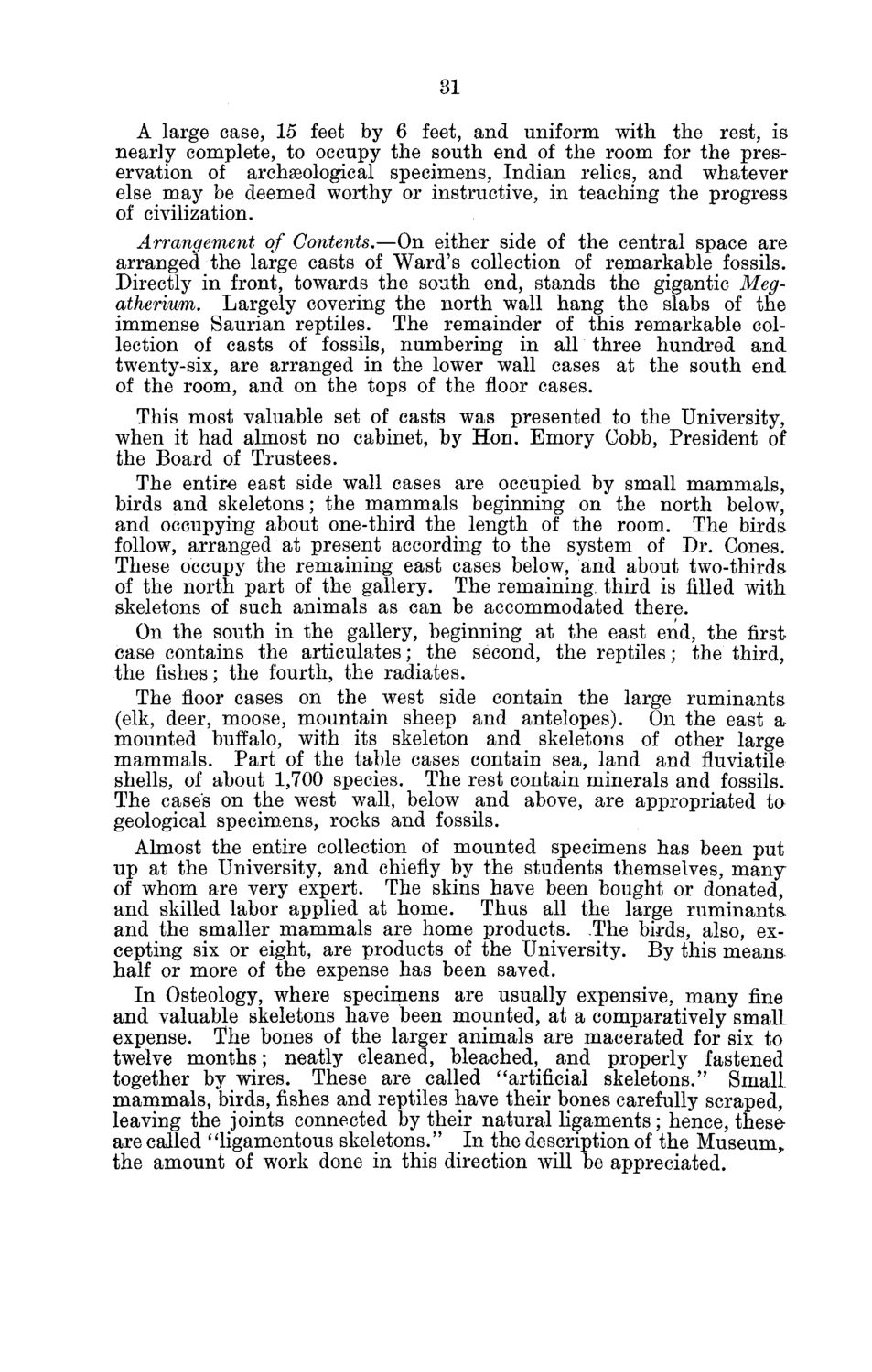| |
| |
Caption: Board of Trustees Minutes - 1880
This is a reduced-resolution page image for fast online browsing.

EXTRACTED TEXT FROM PAGE:
31 A large case, 15 feet by 6 feet, and uniform with the rest, is nearly complete, to occupy the south end of the room for the preservation of archaeological specimens, Indian relics, and whatever else may be deemed worthy or instructive, in teaching the progress of civilization. Arrangement of Contents.—On either side of the central space are arranged the large casts of Ward's collection of remarkable fossils. Directly in front, towards the south end, stands the gigantic Megatherium. Largely covering the north wall hang the slabs of the immense Saurian reptiles. The remainder of this remarkable collection of casts of fossils, numbering in all three hundred and twenty-six, are arranged in the lower wall cases at the south end of the room, and on the tops of the floor cases. This most valuable set of casts was presented to the University, when it had almost no cabinet, by Hon. Emory Cobb, President of the Board of Trustees. The entire east side wall cases are occupied by small mammals, birds and skeletons; the mammals beginning on the north below, and occupying about one-third the length of the room. The birds follow, arranged at present according to the system of Dr. Cones. These occupy the remaining east cases below, and about two-thirds of the north part of the gallery. The remaining third is filled with skeletons of such animals as can be accommodated there. On the south in the gallery, beginning at the east end, the first case contains the articulates; the second, the reptiles; the third, the fishes; the fourth, the radiates. The floor cases on the west side contain the large ruminants (elk, deer, moose, mountain sheep and antelopes). On the east a mounted buffalo, with its skeleton and skeletons of other large mammals. Part of the table cases contain sea, land and fluviatile shells, of about 1,700 species. The rest contain minerals and fossils. The case's on the west wall, below and above, are appropriated to geological specimens, rocks and fossils. Almost the entire collection of mounted specimens has been put up at the University, and chiefly by the students themselves, many of whom are very expert. The skins have been bought or donated, and skilled labor applied at home. Thus all the large ruminant a and the smaller mammals are home products. The birds, also, excepting six or eight, are products of the University. By this means half or more of the expense has been saved. In Osteology, where specimens are usually expensive, many fine and valuable skeletons have been mounted, at a comparatively small expense. The bones of the larger animals are macerated for six to twelve months; neatly cleaned, bleached, and properly fastened together by wires. These are called "artificial skeletons. ,, Small mammals, birds, fishes and reptiles have their bones carefully scraped, leaving the joints connected by their natural ligaments; hence, theseare called "ligamentous skeletons.'' In the description of the Museum, the amount of work done in this direction will be appreciated.
| |